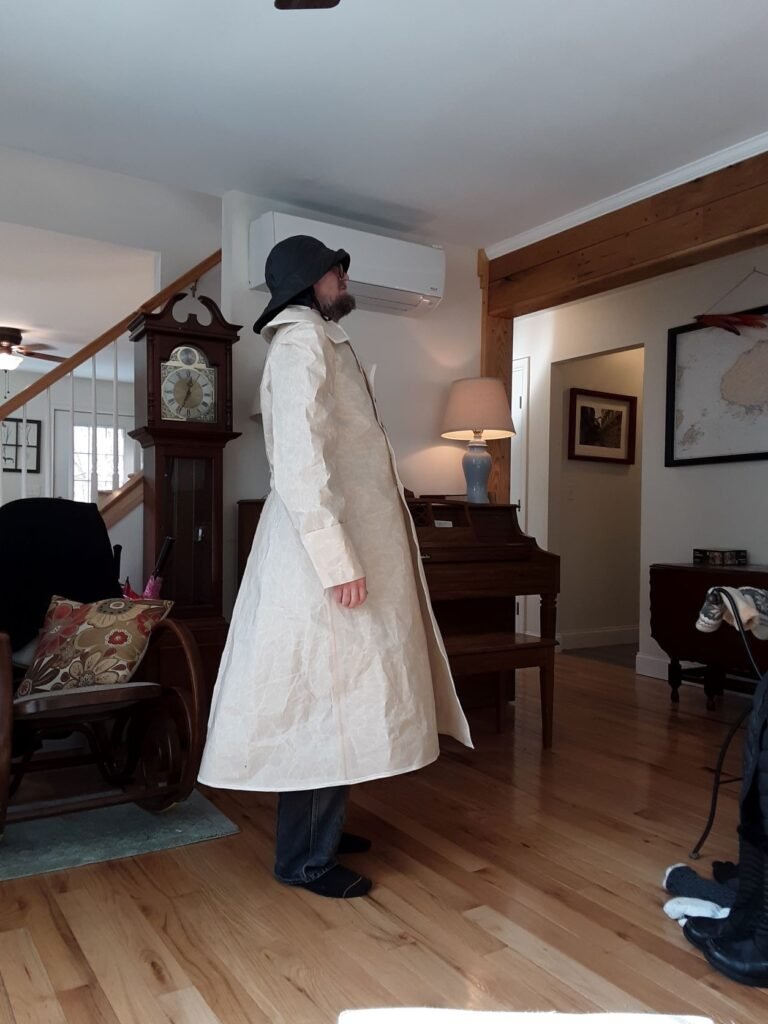

If you asked me to fit out a boat for a cruise to the tropics, and to put together a list of necessary things, I could do it with ease: I’ve been doing voyages like that for close to thirty years. Likewise if you wanted to know what’s necessary for a two-week ocean passage, or what not to bring when chicken-bussing around Central America. These are all within my scope of experience. But trying to prepare for something about which I have no clue adds a whole new level of interest.
I’m trying to prepare for just such a thing right now—a summer voyage to Greenland—and the problem is we don’t know what we don’t know. My friend Mark Synnott has been carefully fitting out his boat, a Stevens 47, for more than a year now for this trip, and I’ve been helping where I can. Some things are pretty straightforward, like splicing new halyards or securing coast pilots and charts, but occasionally I get an odd call that makes the head spin.


One such call was a request that I come up with some tuks. I didn’t even know what a tuk was, and a keyword search only turned up southeast-Asian ice cream trucks. Once I figured out what we wanted, though, I was still not much closer. Traditionally, a tuk is a chisel on a long pole, used for chopping fishing holes in ice. They are available in some variety from outfitters in northern Michigan, where ice is a big part of people’s lives, but we weren’t after the purest form of tuk. What we needed was a long pole with a tip that could be used for pushing pancake ice around. Kind of like the spiked poles lumberjacks use when floating logs down to the sawmill. Except we didn’t want the spikes too sharp, given that the dinghy is an inflatable. It was time to invent.




I still had, left over from Ganymede’s chainplates, a piece of 3/8” silicon bronze plate stock I’d been saving for just such a need. To sketch out a couple of heads was the work of a moment; to have them cut out by a friend with a plasma cutter the work of a few more. The poles were more complicated: I wanted ash, but 12-foot ash poles or planks are hard to come by, so I found some 1×4 doug fir planks at the local Lowe’s instead. To make them strong enough, I laminated uni-directional carbon fibers between two planks, then sawed that in half lengthwise to make two poles. At the end, where the bronze heads are bolted on, I reinforced the area with some carbon fiber and Kevlar sock (also leftovers from some other projects), and epoxied on a fiberglass backing plate to take the bolts.
With everything together, I painted them a hideous high-visibility yellow, sure to be seen for miles across the arctic ice. But that was just one small piece of the prep.

I’ve mentioned in a recent post the sewing machine and the notions I was making on it. It was time to make more. First, I had my wife Danielle come up with an efficient duffel-bag pattern, and I used some retired dinghy sails to make heavy-duty luggage to contain all the puffy clothing I imagine such a trip will require.
Warmed up by that simple task, I turned to another sewing project that had been stewing in the back of my mind for more than a decade.
Everyone has seen the pictures of the Gloucester sea captain standing at the helm of his schooner with water streaming from his sou’wester and boot-length black coat. Now, I’ve been using a sou’wester for years—they’re far superior to hoods, which usually don’t turn when my head does, so all I get is a view of the inside of the hood. The sou’wester allows unrestricted rubbernecking, which is important for visibility. Sadly, the sou’wester’s counterpart has fallen by the wayside in foulie fashion, to be replaced by the short jacket which rather than shedding water away from the body, directs it right back toward the inevitable pinhole in the mandatory bibs. Every time I sat slowly soaking in the icy water that my bibs were letting in, I remembered the dry-looking Gloucesterman and wondered if there wasn’t something there.

Modifying a costume pattern that Danielle found at a fabric shop, I made a prototype coat from sailcloth.
Too stiff for actual use, it served to figure out dimensions and fit. Next we bought some nice waterproof polyester and lining material to make a real working model.



It stretched my poor sewing machine skills beyond their limit, but at last we had a working prototype ready for testing. It has taped seams to keep the water out, insulation because it’s always chilly when it rains, outside pockets to store idle hands in, inside pockets to store snacks, and it reaches past the boot-tops, so the bibs can be dispensed with.


I don’t know whether it will get in the way when tucking in reefs and otherwise leaping about the decks, but for standing at the helm looking salty, it will have no equal. In the meantime, other preparations, too many for this post, continue. Stay tuned, dear reader, and in time I’ll get caught up on all of them, even if we’re halfway to Greenland before I do.